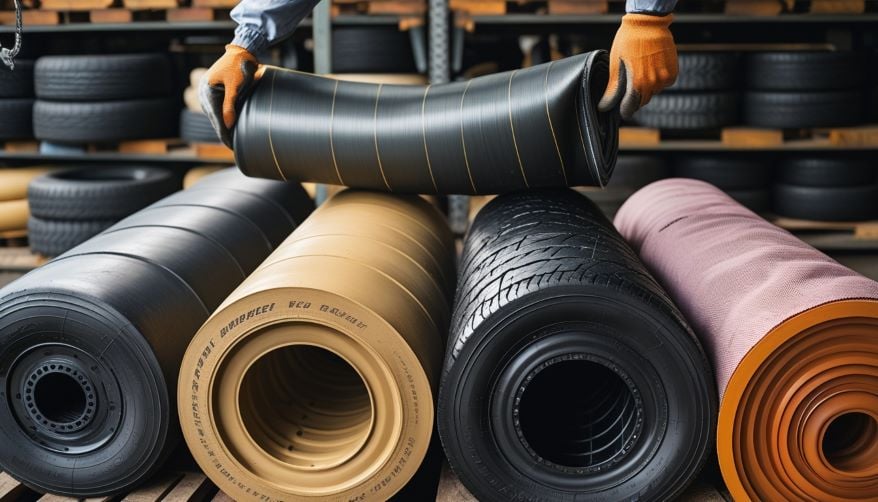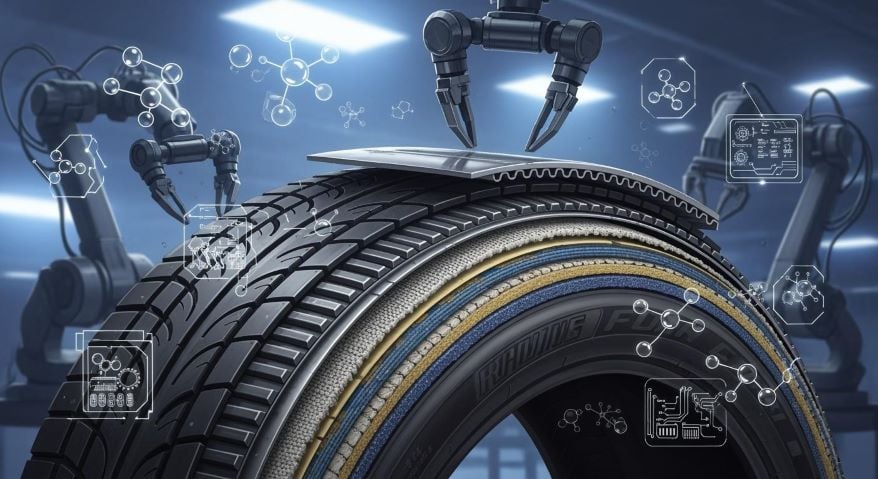How Tires Are Made: The Surprising Science Behind Every Spin
Have you ever thought about how tires are made? Tires uses rubber, steel, and fabric. And, these are mixed together in careful steps. You see science in action when you drive.
Science helps keep you safe and comfortable on the road. Chemistry, physics, and engineering work together to make the tires you use.
How Tires Are Made
Tire Materials
You start with raw materials. Specifically, you need natural rubber, synthetic rubber, steel, and fabric. Also, each material has a special job. Rubber gives the tire flexibility and grip. Steel adds strength. Fabric, often made from polyester or nylon, helps the tire keep its shape. You also use chemicals to improve performance. Additionally, these chemicals help the tire resist heat and wear.
Tip: The right mix of materials makes your tire safe and long-lasting.
Tire Layers
You build a tire in layers. Each layer has a purpose. The inner liner holds air inside. The body ply uses fabric to give the tire strength. The bead is a ring made of steel wires. It helps the tire stay on the wheel. The sidewall protects the sides from damage. The tread is the outer layer. It touches the road and gives you grip.

| Layer | Main Material | Purpose |
|---|---|---|
| Inner Liner | Synthetic Rubber | Holds air |
| Body Ply | Fabric | Adds strength |
| Bead | Steel Wire | Secures tire to wheel |
| Sidewall | Rubber | Protects sides |
| Tread | Rubber/Compounds | Provides grip |
The Building Process
You build a tire on a rotating drum. Next, you place each layer one by one. Firstly, you add the inner liner. Thereafter, you wrap the body ply around the drum. Then, you fit the bead rings at the edges. Thereafter, these rings lock the tire to the wheel. Then, you add more layers for strength. Finally, you finish with the tread on the outside.
Note: The drum spins to help you place each layer evenly.
You use machines to press the layers together. Particularly, this step makes sure the tire is strong and balanced. Moreover, you check for air bubbles or weak spots. If you find a problem, you fix it before moving on.
Curing And Finishing
You move the tire into a mold. The mold has the tread pattern carved inside. Then, you heat the tire in the mold. This step is called curing or vulcanization. Vulcanization uses heat and pressure to bond the rubber. The rubber becomes tough and elastic. The tread pattern forms during this step.
After curing, you cool the tire. You inspect it for defects. You check the balance and shape. If the tire passes all tests, it is ready for use.
Science Fact: Vulcanization changes the rubber at a molecular level. This process makes your tire strong and flexible.
Now you know how tires are made. Each step uses science to create a safe and reliable tire. When you drive, you trust the work done in every layer.
Tire Technology And Science
Tread Patterns
You see tread patterns on every tire. These patterns help your wheels grip the road. When you drive on wet roads, the grooves push water away. This keeps your car from slipping. Some patterns reduce noise. You hear less sound when your wheels roll. If you want better grip, choose a tire with deep grooves. For less noise, pick a tire with small, close patterns.
Tip: Check your tire tread often. Worn tread can make your car unsafe.
Centrifugal Force
When your wheels spin fast, centrifugal force acts on them. This force pushes the tire outward. At high speeds, your tire shape can change. The tire may stretch or bulge. If you use modern tire technology, you get stronger tires. These tires keep their shape during fast motion. You stay safer on the road.
- Centrifugal force = force that pushes objects away from the center during motion.
- Strong tires resist this force and keep you in control.
Engineering For Performance
Engineers design tires for many needs. Some tires help you save fuel. Others give you more grip for racing. You find special rubber blends in performance tires. These blends handle heat and wear better. Engineers also test how tires work with different wheels. They check how tires handle bumps, turns, and sudden stops. You benefit from these tests every time you drive.
| Feature | Benefit |
|---|---|
| Special rubber | Lasts longer |
| Strong fabric | Keeps shape |
| Smart design | Handles motion well |
Note: Every part of your tire uses science to keep you safe and comfortable.
How A Tire Is Made For Safety
Grip And Traction
You need grip and traction to stay safe on the road. Tire makers use special rubber compounds for this. These compounds help your tires stick to the road, even when it rains. Engineers design the tread pattern to push water away. This keeps your car from sliding. You can check your tire’s grip by looking at the tread depth. Deeper tread means better grip.
- How to check grip:
- Look at the tread grooves.
- Use a coin to measure depth.
- Replace tires if the tread is low.
Tip: Always choose tires with the right tread for your weather.
Comfort And Noise
You want a smooth and quiet ride. Likewise, tire makers use soft rubber and special patterns to reduce noise. The sidewall absorbs bumps from the road. Thus, it helps you feel less vibration. Subsequently, engineers test tires on different surfaces. They listen for noise and check for comfort.
| Feature | How It Helps You |
|---|---|
| Soft rubber | Less road vibration |
| Unique patterns | Lower tire noise |
| Strong sidewall | Smoother ride |
Note: Check your tire pressure often. Proper pressure improves comfort.
Efficiency And Longevity
You can save money with efficient and long-lasting tires. Therefore, tire makers use low rolling resistance rubber. This means your car uses less fuel. Engineers add strong materials like nylon and steel. These help your tires last longer. You can make your tires last by rotating them every 6,000 miles.
- How to make tires last:
- Rotate tires often.
- Keep them inflated.
- Avoid sudden stops.
Science Fact: Low rolling resistance means less energy lost as heat.
You now know how tire makers build safety into every tire. Also, each step helps you drive with confidence.
You can see science in each tire. Firstly, raw materials turn into strong layers. Then, engineers use chemistry and physics to shape the wheels. certainly, these steps help keep you safe and comfortable. In fact, new tire technology gives you better grip, less noise, and longer use. When you drive, think about the science in your tires.
Every tire is an example of smart engineering in daily life.
References
How a tire is made. (n.d.). USTMA. https://www.ustires.org/tires-101/how-tire-made
Ever wondered how tyres are made? Learn the process. (n.d.). Apollo Tyres. https://www.apollotyres.com/en-in/stories/blogs/tyre-guides/how-tyres-are-made/
How are Tires Made? Learn about Tire Parts & Construction. (n.d.). https://www.bridgestoneamericas.com/en/company/safety/tires-101/tire-construction






